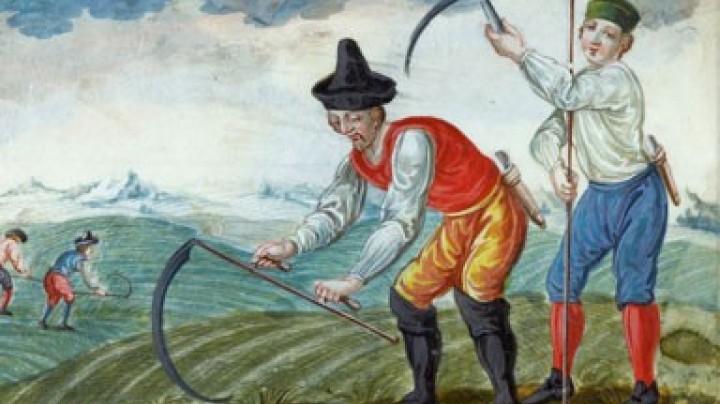The Emperor is spinning, the Empress is peeved – Workshops and Habsburg economic policy
Franz I Stephan ‘put a spanner in the works’ of his wife’s policy with his ambitions in the textile industry. Nevertheless, there were advantages to being married to an empress, because she could simply change the rules.
Quote from a contemporary encyclopaedia: Johann Heinrich Zedler, Grosses vollständiges Universallexicon aller Wissenschaften und KünsteManufactures: these are commonly understood to be all objects which are produced by hand, whatever materials they may consist of. One may, however, understand manufactures properly to be goods that are produced from materials such as metal, stone, wood, silk, wool and other similar materials; manufactories are workshops where many workers can be found who together produce one type of goods, e.g. tools. stockings, hats etc. Such manufactories enrich a country, for they not only prevent too much money from leaving the country but also ensure that money is also brought into the country by foreigners.
Franz Stephan put up a calico ‘manufactory’ on his estate at Sassin in Hungary. By doing so he was not only acting against the economic policy plans of his imperial consort Maria Theresa, who had earmarked Hungary for agricultural production. He was also acting in violation of a privilege: the calico factory at Schwechat near Vienna had the exclusive right of production. In the end his factory was also given this right, which led to stiff competition. In 1761 Maria Theresa withdrew the privilege for both factories, with the result that from 1763 there was a veritable boom in establishing calico factories.
The Habsburg rulers promoted these ‘manufactories’ because they hoped that this would lead to economic growth and an increase in revenue. Therefore from the middle of the seventeenth century so-called ‘manufactory privileges’ were granted. In particular it was the textile industry that seemed worth promoting in this way, because it accounted for 35% of the total volume of the Monarchy’s exports and was thus one of the leading sectors of the Habsburg economy. In 1790 there were as many as 163 textile ‘manufactories’ in the Austrian territories, most of them in the Archduchy of Austria below the Enns (Lower Austria) and in Bohemia. In second place came manufactories involved in metal processing with 44 enterprises.
The proprietors of such ‘privileged manufactories’ were allowed to produce their goods without any restrictions regarding guilds and in some cases they had an exclusive right to the production and sale of their goods. Over and above that they were exempted from the payment of taxes for a certain period and their workers were also exempted from military service.
The restriction of the production and sale of products to guilds was abolished under Joseph II, and the factory buildings were henceforth allowed to display the sign ‘Imperial-Royal Privileged Manufactory’.
















